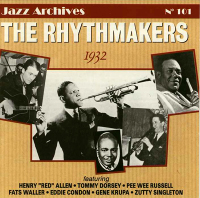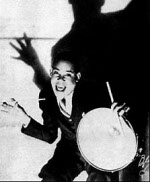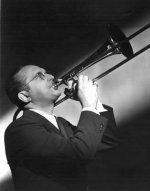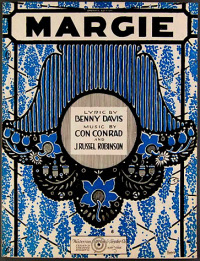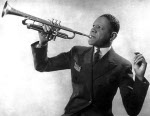The country was deadlocked in the Great Depression in 1932 when an unlikely group of musicians came together in a New York recording studio. There was a cabaret singer from Cleveland, a piano ace from Harlem, a Crescent City trumpeter and a clarinetist from St. Louis. Some black, some white, they had one common denominator: stellar jazz talent. Recording under the name The Rhythmakers, this multi-racial, mega-talented studio band produced a hot, driving sound.
It all started with a routine business trip to Cleveland for jazz impresario Irving Mills, who discovered and signed the quirky new singing talent Billy Banks. Mills brought his protégé to New York to headline at Harlem's popular nightspot, Connie's Inn. To promote Banks and his New York engagement Mills hired guitarist and bandleader Eddie Condon to put together a band for a series of records starring Billy Banks.
And what a band it was! Condon assembled a remarkable gathering of jazz titans. Trumpeter Henry 'Red' Allen, bass players Al Morgan and Pops Foster and drummer Zutty Singleton were all from New Orleans. Condon hired fellow Chicagoan, pianist Joe Sullivan, Missourian Jack Bland on guitar and the self-styled jazz clarinetist Pee Wee Russell. For the later sessions Condon added stride piano master Fats Waller and a 27-year-old trombone wizard named Tommy Dorsey.
Over time Billy Banks' gender-bending vocals on The Rhythmakers' tracks have been famously mistaken for those of the 1930s bandleader, the very female Una Mae Carlisle. Banks had a parallel career as a female impersonator on the vaudeville stage when he was not fronting jazz bands.
This week trumpeter Duke Heitger and guitarist Clint Baker join The Jim Cullum Jazz Band on Riverwalk Jazz to celebrate the passionate spirit of The Rhythmakers.
Legally imposed racial segregation enforced throughout the country made it impossible for The Rhythmakers to perform in public in the 1930s. American audiences were simply not ready to see black and white performers on stage together. As a result The Rhythmakers remained strictly a recording band.
Today these Rhythmakers tracks, laid down in four separate sessions, are highly prized by musicians, record collectors, jazz writers and fans. Though the sessions engendered a spirit of lighthearted fun, a brilliant, fiery chemistry evolved between Pee Wee Russell and Henry 'Red' Allen that reflected the truly uninhibited, improvisatory nature of jazz.
The propulsive, rhythmic feel of the recordings is fueled by the driving rhythm section of the New Orleans men, plus the use of two unusual strummed instruments played by Eddie Condon and Jack Bland. They were lutes with plectrum necks made by the Vega Banjo Company. Vega had manufactured these unusual hybrid instruments in the 1920s so that jazz banjo players like Condon could play a guitar-like instrument without having to learn new fingering.
After making The Rhythmakers recordings and headlining at Connie's Inn, Billy Banks worked around New York for a short while, then went on tour in Europe, eventually settling in Tokyo, Japan.
Three decades later in 1964, on tour with the Eddie Condon All-Stars in Japan, Pee Wee Russell had a reunion with Billy Banks. Pee Wee had not seen Banks since The Rhythmakers sessions in 1932 in New York. The story goes that after an initial greeting Pee Wee asked Banks, "So—you got any more gigs?"
Photo credit for Home Page: Rhythmakers 1932 Reissue Image: EPM/Jazz Archives copyright 1997
Text based on Riverwalk Jazz script by Margaret Moos Pick ©2012


